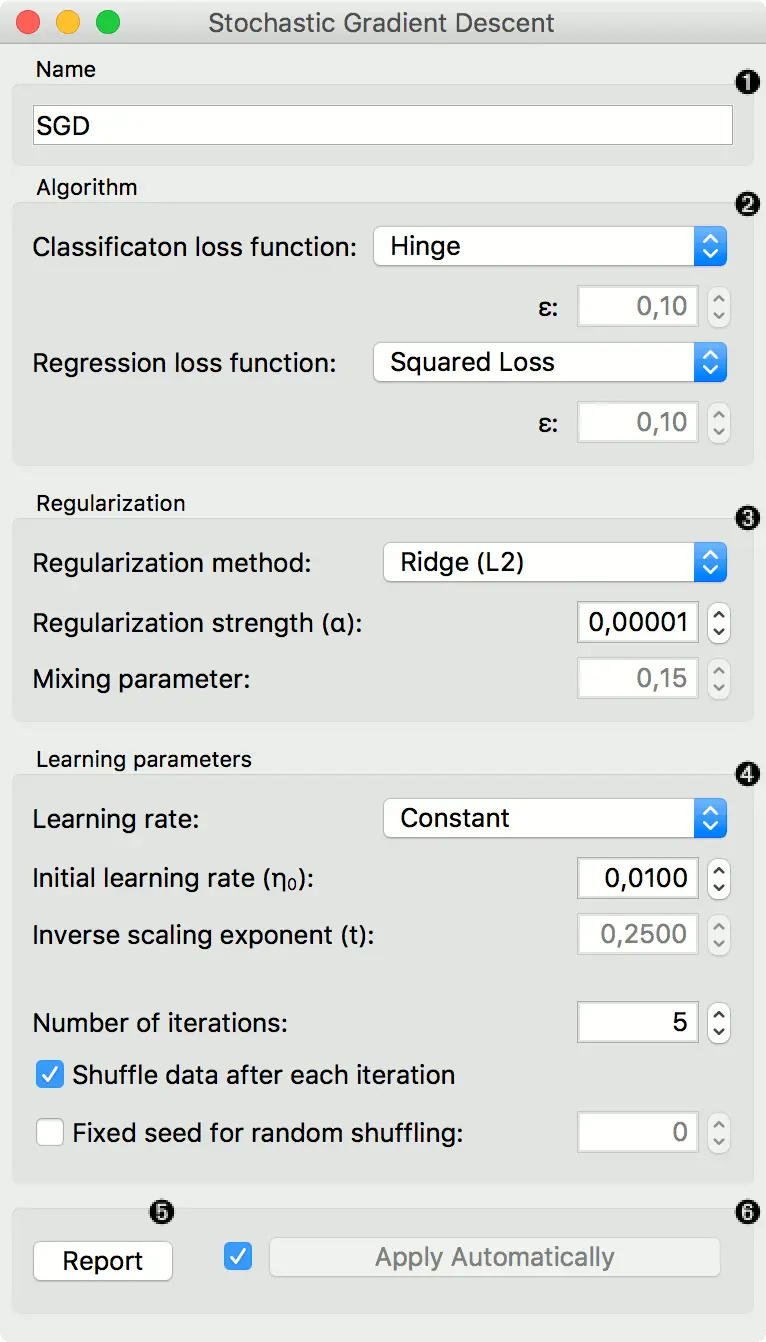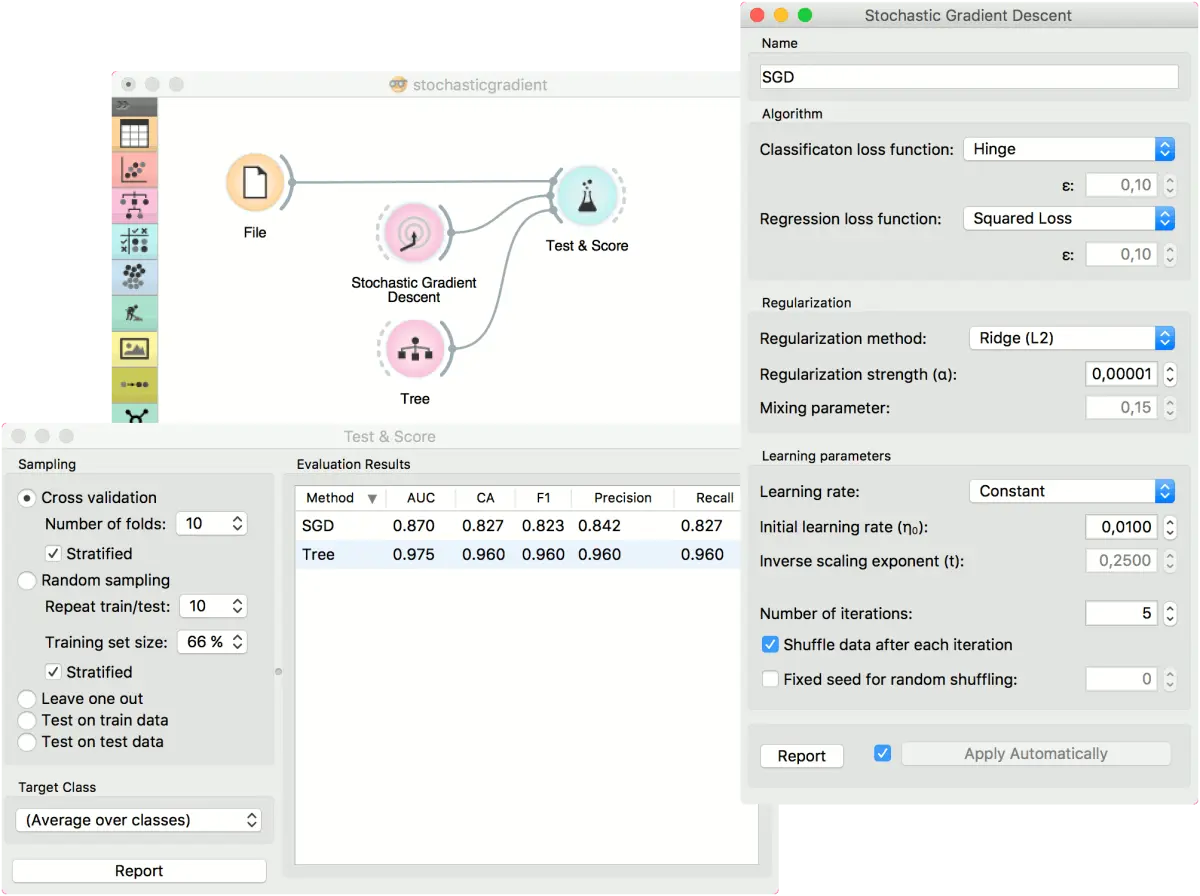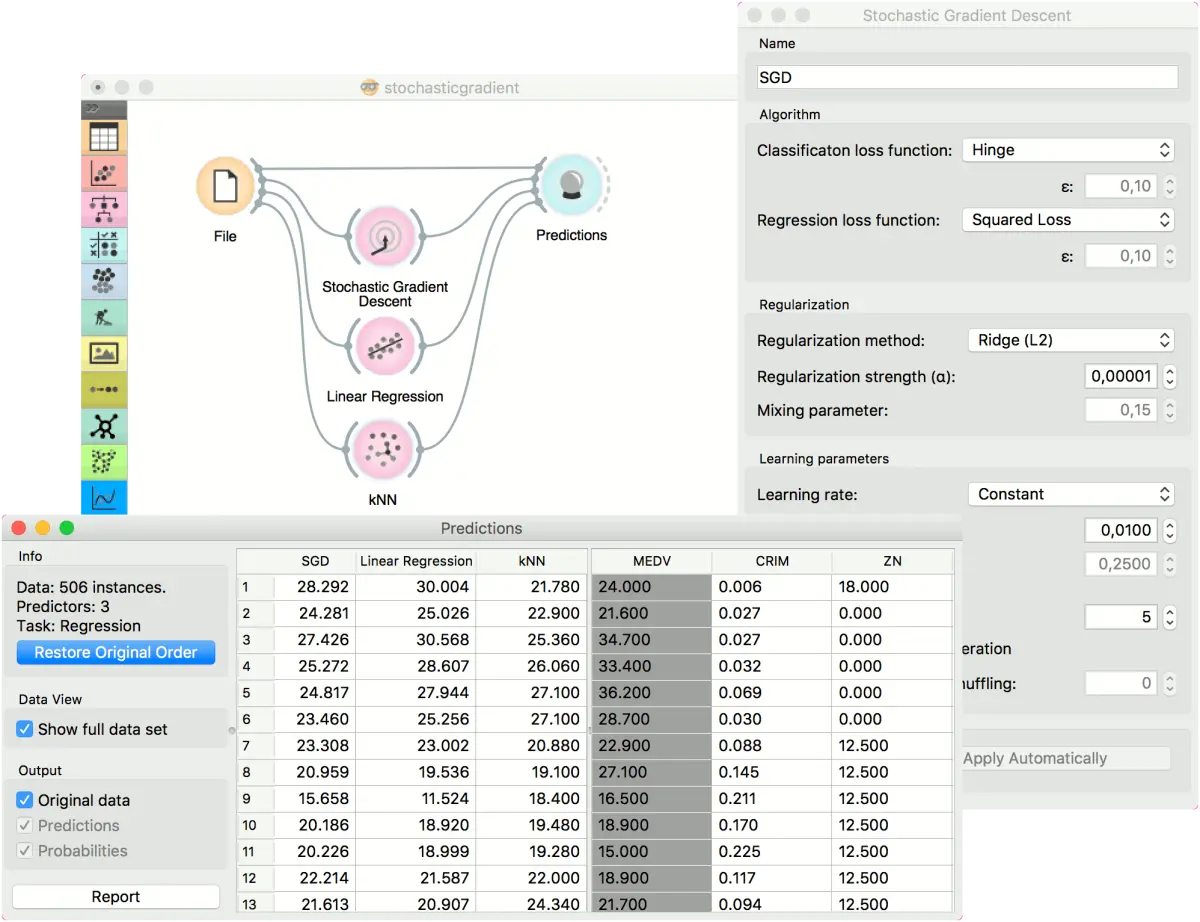随机梯度下降(Stochastic Gradient Descent)
使用梯度下降的随机逼近最小化目标函数。
输入
- 数据:输入数据集
- 预处理器:预处理方法
输出
- 学习器:随机梯度下降学习算法
- 模型:训练过的模
功能
随机梯度下降(Stochastic Gradient Descent) 小部件使用随机梯度下降,该函数通过线性函数将所选损失函数最小化。该算法通过一次考虑一个样本来逼近真实梯度,并同时基于损失函数的梯度更新模型。为了进行回归,它将预测变量作为总和的最小化变量(即M估计量)返回,对于大规模和稀疏数据集特别有用。
界面

- 指定模型名称。 默认名称为“SGD”。
- 算法参数:
- 分类损失函数:
- Hinge (linear SVM)
- Logistic Regression (logistic regression SGD)
- Modified Huber (smooth loss that brings tolerance to outliers as well as probability estimates)
- Squared Hinge (quadratically penalized hinge)
- Perceptron (linear loss used by the perceptron algorithm)
- Squared Loss (fitted to ordinary least-squares)
- Huber (switches to linear loss beyond ε)
- Epsilon insensitive (ignores errors within ε, linear beyond it)
- Squared epsilon insensitive (loss is squared beyond ε-region).
- 回归损失函数:
- Squared Loss (fitted to ordinary least-squares)
- Huber (switches to linear loss beyond ε)
- Epsilon insensitive (ignores errors within ε, linear beyond it)
- Squared epsilon insensitive (loss is squared beyond ε-region).
- 分类损失函数:
- 正则化规范以防止过度拟合:
- 无.
- Lasso (L1) (L1 leading to sparse solutions)
- Ridge (L2) (L2, standard regularizer)
- Elastic net (mixing both penalty norms).
正则化强度定义将应用多少正则化(我们进行正则化越少,我们允许模型拟合数据的程度就越多)以及混合参数(L1 和 L2 损失之间的比率将是多少)(如果设置为 0,则损失为 L2 ,如果设置为 1,则为 L1)。
- 学习参数.
- 发送报告
- 勾选 “自动应用” 以自动传送对其他小部件的更改,并在连接学习数据后立即训练分类器。 或者,在配置后按 “应用”。
示例
对于分类任务,我们将使用 iris 数据集并在其上测试两个模型。 我们将 随机梯度下降(Stochastic Gradient Descent) 和树(Tree) 连接到测试与评分(Test & Score)。 我们还将文件(File) 连接到 测试与评分(Test & Score),并在小部件中观察了模型的性能。

对于回归任务,我们将比较三种不同的模型,以查看预测哪种结果。出于本示例的目的,使用了 housing 数据集。 我们将 文件(File) 连接到 随机梯度下降(Stochastic Gradient Descent) ,线性回归(Linear Regression) 和k 近邻(kNN) 小部件,然后将全部四个添加到预测(Predictions) 小部件。

反馈问题
文档有问题? 或者有其他意见和建议? 请在本文档的 Github 仓库直接反馈
点我反馈进入反馈页面不知道如何反馈, 请点击这里